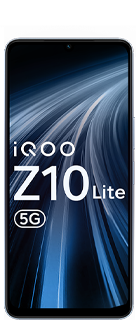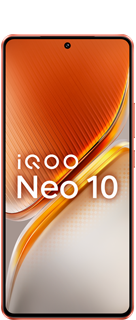Death Stranding 2: On the Beach Review — Ode to a Dying Planet
Death Stranding 2 builds upon its predecessor in every possible way, delivering an experience like no other in the medium.

When Death Stranding came out in 2019, it split players down the middle between those puzzled and frustrated by the sparsity of its design and the ones enamoured by the same pared-back approach to gameplay. Some, expecting a moody, action-adventure game about shooting ghostly creatures, saw Death Stranding as a “walking simulator”. Others knew better than to expect the expected and were left surprised by the game's stubborn commitment to its identity.
Very few games have that: an identity. Most titles, even the great ones, are firmly rooted in genre substrates — a third-person action-adventure game, an RPG, a shooter. Others are offshoots — a Soulslike, a Roguelike, an immersive sim. But Death Stranding was its own thing. As its creator Hideo Kojima — auteur game designer, industry legend, film buff and the guy who made a bunch of espionage action games about the ethics of artificial intelligence, consequences of war and control of information that presciently predicted the future that we find ourselves living in today — argued: most games were centred around “the stick”, a tool to keep the bad stuff away; Death Stranding was designed around “the rope”, an instrument to bind us together.
And at its core, that was what the game was about: walking around desolate landscapes, making deliveries and connecting scattered colonies of people reeling from an apocalypse. Mere months after the launch of the game, Kojima's prescience was once again at play as the world went into lockdown, sheltering itself from the Covid-19 pandemic, and Death Stranding's themes found resonance with the new reality of living locked up at home, away from our friends, scared of an invisible threat outside.

With Death Stranding 2: On the Beach, which releases this week on PS5, Kojima has doubled down on his uncompromising vision. Those hoping for DS 2 to embrace a more traditional video game design are likely to be left puzzled and frustrated again. Yes, the game is more open to guns and combat and features an expanded set of tools to facilitate that, so it might appeal a little more to people who like wielding “the stick”. But make no mistake, “rope” aficionados, Death Stranding 2 is still about a guy walking across a continent with an ungodly amount of cargo on his back. It's the familiar gameplay loop from the first game — picking up orders, managing your inventory and trekking along the best path to your destination — expanded in scale and scope in every single aspect.
For all its strengths, Death Stranding 2 also comes with many of the same flaws of the first game. It goes overboard in providing players the tools to take on its many challenges — “You want your delivery runs to be faster? Here are 13 ways to do that.” It wraps its main story into multiple layers of thematic overtures and distractions, not all of which justify their indulgence. And then there are some familiar frustrations related to the gameplay that grate against the serenity of your surroundings in the game. But these missteps remain minor grievances in an otherwise audacious title that still promises — and delivers — an experience like no other in the medium, just like Death Stranding did nearly six years ago.

Death Stranding 2: On the Beach begins again with Sam Porter Bridges, now living a quiet life with baby Lou after connecting North America in the first game, away from prying eyes of UCA. After a lifetime's worth of loss, Sam has finally found peace, living with his adopted child in a tucked away shelter close to the Mexican border. But this familial bliss is short-lived. Fragile, who helped Sam in his expedition across the American continent in the first game, finds his hideout and asks him to connect Mexico to the chiral network. Sam takes on the job reluctantly and brings Mexico into the fold, but a horrific tragedy shatters the life he built for himself after the events of the first game. Devastated by a cruel loss and informed by a startling discovery, Sam is given a chance to begin again on another continent.
He's told of a mysterious structure, a plate gate, that connects Mexico to Australia and is asked to connect the country to the chiral network, as well. Sunken in his grief, Sam agrees to take on the assignment and joins Fragile and couple of new allies on the DHV Magellan, a colossal Metal Gear-style ship that travels through the tar and serves as the base of operations in the game. Fragile is now heading up Drawbridge, a new civilian logistics outfit working to expand the chiral network outside the borders of the UCA. After an intense introduction section set in Mexico, Death Stranding 2 shifts up a gear to reveal its true act: the vast, untamed wilderness of Australia.

As Sam, you begin your journey on a new continent working for Drawbridge to connect fractured pockets of civilisation. But things aren't, of course, straightforward. Sam learns that there's much he doesn't know about Lou, so he pushes forward with his quest, with new revelations, new allies and a few old foes waiting on his path ahead. Alongside the central pillar of Sam's story, DS 2 also weaves two alternative narratives — one about strange visions that Sam's been having and other about the ghostly realm of the dead that reflects various natural disasters from the world of the living, featuring a mysterious military figure, Neil Vana (played by actor Luca Marinelli, a new addition to the cast this time around). There are several other flashbacks and surreal sequences that connect the dots of the larger picture. These disparate narrative threads come together in true Kojima fashion, through astonishing imagery, evocative music and confounding lore to form the unique fabric of DS 2.

Just like its predecessor, Death Stranding 2 often belabours the point and flirts with corny sermonising. It also gets stuck in overlapping narratives that often don't bring meaningful context to the central story. But unlike the first game, it doesn't drag its feet or dance around its arguments, diving headfirst into the thick of it all instead. And so, the sequel, while much longer than Death Stranding, is paced far better, with its story expanding to compelling crescendos towards the end of each episode. It's also less esoteric and more emotionally charged, as it is after all telling a more personal story of loss.

And then there's a different story told through the game's unique communal gameplay. It's a game about making deliveries that also expands into a little more traditional action-adventure territory with enemy encounters involving shooting, stealth and tactical preparation. There are several larger boss fights where combat is the only way forward, but you can largely push through the game without taking on enemies, both living and dead ones. Every mission begins at a delivery terminal, where you pick up a new order to deliver to a shelter and bring it under the range of the chiral network, which allows you to build structures and access structures built by other players online.

Each main order comes with an escalation of challenges and tools provided to overcome them. As you slowly establish the chiral network across a region, you're able to construct larger structures: bridges, watchtowers, timefall shelters, generators, and ziplines that make the trek faster and safer. Once a shelter and its surrounding area is connected to the network, you're also able to see and utilise structurers built by other players in your server. The Social Strand System, as the game calls its distinct co-operative online experience, is not just foundational to Death Stranding 2's gameplay — it lives at the emotional core of the game.

This unsigned communal contract is also tied to an ingenious system that reflects modern social media, where you ‘like' the structures left behind by other players and receive ‘likes' for your constructions in return, creating a kinship of sorts — a strand that binds two players together. But unlike social media, the exchange never feels transactional. It's driven by the shared experience of hardship and a collective effort to make it easier for yourself and those who follow in your path. The Social Strand System underpinned the distinct gameplay loop in Death Stranding, and it anchors your efforts in the sequel, as well, telling you that you're not alone in saving the world.

But there is a downside to your growing tool set and the widening scope of… let's call it public infrastructure. Over time, you accumulate a deep repository of instruments and conveniences that invariably help you on your journey, but also end up somewhat diluting the essence of the game and overwhelming you with excess technology. There are positive aspects to this upgrade process. For instance, you walk a route the first time and later you can contribute to establish paved roads, a monorail system and a network of ziplines to quickly traverse that distance. It's extremely helpful and shortens your journey time on repeated delivery runs on a route.
Source;Gadgets360
Please like and follow your gaming and knowledge Questers @Kvkartikji04
Please sign in
Login and share






















